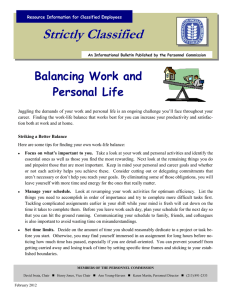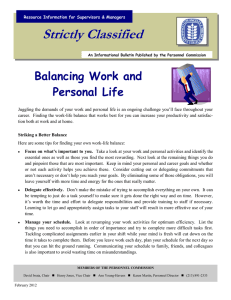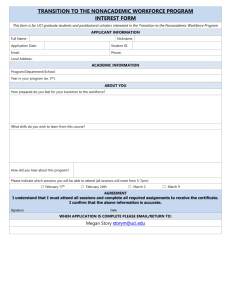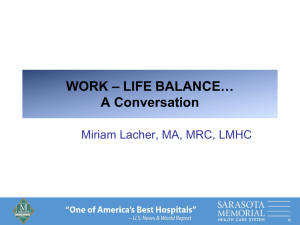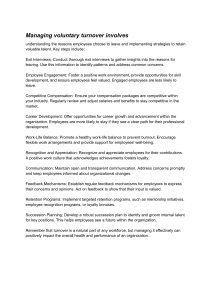Human resource management: a case study approach
advertisement
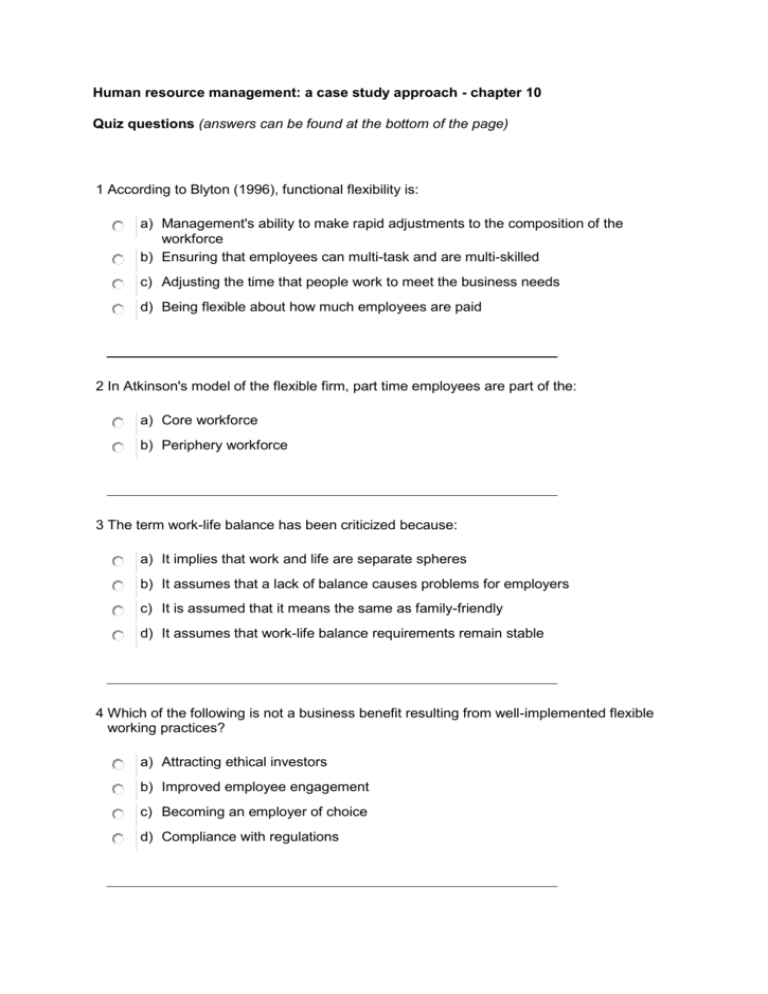
Human resource management: a case study approach - chapter 10 Quiz questions (answers can be found at the bottom of the page) 1 According to Blyton (1996), functional flexibility is: a) Management's ability to make rapid adjustments to the composition of the workforce b) Ensuring that employees can multi-task and are multi-skilled c) Adjusting the time that people work to meet the business needs d) Being flexible about how much employees are paid 2 In Atkinson's model of the flexible firm, part time employees are part of the: a) Core workforce b) Periphery workforce 3 The term work-life balance has been criticized because: a) It implies that work and life are separate spheres b) It assumes that a lack of balance causes problems for employers c) It is assumed that it means the same as family-friendly d) It assumes that work-life balance requirements remain stable 4 Which of the following is not a business benefit resulting from well-implemented flexible working practices? a) Attracting ethical investors b) Improved employee engagement c) Becoming an employer of choice d) Compliance with regulations 5 Which of the following European countries has the lowest percentage of home-based workers? a) UK b) Sweden c) Germany d) Greece 6 An effective way of changing the organisation's culture to support flexible working is to: a) Insist that all employees work flexibly b) Make all women returning from maternity leave work part time c) Allow senior management to set an example to their teams by working flexibly d) Subsidise child care costs Quiz answers 1.b. 2.b. 3.a. 4.d. 5.d. 6.c.


